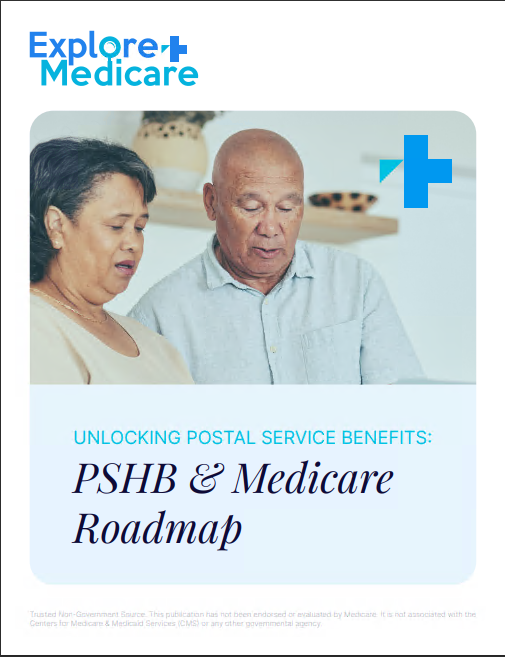Key Takeaways
-
While many 2025 Medicare benefits sound appealing at first glance, they often come with limitations, conditions, or hidden costs that could impact your actual coverage and expenses.
-
It’s important to understand the fine print before making decisions about your Medicare coverage to avoid unexpected out-of-pocket costs or benefit restrictions.
Promises vs. Practicality: Where the Confusion Begins
Medicare in 2025 offers new benefits and enhancements that, on paper, seem like huge wins for enrollees. However, the reality is more nuanced. When you take a closer look, you may find certain restrictions, exclusions, or cost-sharing requirements that limit the real-world value of these benefits.
New headlines about improvements often leave out the eligibility conditions or the narrow situations in which these benefits actually apply. So while you might think you’re getting expanded coverage or lower costs, you could be surprised by what those benefits actually include—or exclude.
1. The $2,000 Out-of-Pocket Drug Cap Isn’t a Universal Solution
One of the most publicized Medicare changes for 2025 is the annual $2,000 out-of-pocket maximum for prescription drugs under Medicare Part D. This sounds like a major financial safeguard, and in many ways, it is. However, several caveats apply:
-
The cap applies only to covered drugs within your Part D plan’s formulary. Drugs not listed are not subject to this protection.
-
You must go through the deductible and initial coverage phases before the cap kicks in.
-
Not all pharmacies are in-network, and using an out-of-network provider could mean higher prices.
-
Specialty drugs may still have steep co-pays before you hit the cap.
So while the cap is an improvement, it doesn’t eliminate all high drug costs, especially for those with complex or chronic conditions.
2. Monthly Prescription Payment Option Isn’t Automatically Activated
Another feature that draws attention is the Medicare Prescription Payment Plan, which lets you spread drug costs over 12 months. This sounds great, especially if you hit the $2,000 cap early in the year. But here’s what you need to know:
-
You must opt in to this program; it’s not automatic.
-
If you enroll, you’re required to make consistent monthly payments, even if you stop using the drug.
-
You could be held accountable for payments even after you leave the plan or change coverage.
This benefit may offer predictability, but it can also become a burden if your needs change midyear.
3. Dental, Vision, and Hearing Benefits Still Have Gaps
Many Medicare Advantage plans promote coverage for dental, vision, and hearing services. While these additions sound attractive, they rarely resemble the comprehensive coverage you’d find in a standalone policy:
-
Benefits are usually limited to basic preventive services.
-
There are annual dollar caps, often too low to cover significant procedures.
-
Network restrictions may limit your choice of providers.
-
Coverage for hearing aids may only apply once every few years.
It’s important to read your plan’s coverage details to know what you are—and are not—getting.
4. Cost Reductions Often Come with Trade-Offs
Many new Medicare plans in 2025 claim reduced copayments or waived deductibles when paired with other benefits like Medicare Part B. But these cost reductions come with strings attached:
-
They often require enrollment in multiple components to qualify.
-
Some benefits apply only when services are performed in-network.
-
Using providers outside of your plan’s preferred list can mean significantly higher out-of-pocket costs.
In short, these incentives can save you money, but only if you follow the plan’s rules closely.
5. Supplemental Benefits Are Not Always Guaranteed
Supplemental benefits like transportation, fitness memberships, and over-the-counter (OTC) item allowances are often advertised. But they are not as consistent as you might expect:
-
These benefits vary widely by plan and region.
-
They can be changed or removed from year to year.
-
Limits on how much you can use—or what you can use benefits for—are common.
-
Some are only available to certain populations, such as those with chronic conditions.
What sounds like an added bonus may actually be hard to access or of limited value in your situation.
6. Prior Authorization Requirements Are Increasing
Many services, especially under Medicare Advantage plans, now require prior authorization. While this is often framed as a tool for care coordination, the reality is more burdensome:
-
Prior authorization delays access to care.
-
Denials are not uncommon and may require appeals.
-
You may need authorization for routine tests or procedures.
In 2025, the push for cost containment has increased the number of services that fall under these rules. This could complicate even basic care planning.
7. Network Limitations Can Disrupt Care
Medicare Advantage plans in particular operate under provider networks. Staying in-network keeps your costs down, but here’s where problems arise:
-
Your preferred provider may not be in-network.
-
Some specialists may drop out midyear, especially if contracts change.
-
Emergencies outside of your network area can lead to unexpected charges.
If your care is not fully coordinated within your plan’s network, your out-of-pocket costs could rise quickly.
8. Star Ratings Don’t Tell the Whole Story
The Centers for Medicare & Medicaid Services (CMS) rate Medicare Advantage and Part D plans using a star system. A higher rating suggests better performance, but be careful:
-
Ratings emphasize customer satisfaction, not clinical outcomes.
-
A plan with 4 stars may still have poor coverage in areas you care about.
-
The data behind the stars can be outdated by the time you enroll.
Always use star ratings as just one of many tools in your decision-making process.
9. Enrollment Deadlines Limit Your Flexibility
Medicare’s enrollment windows are strict, and missing a deadline can lock you into coverage you don’t want for a full year. Here are some important timelines for 2025:
-
Annual Enrollment Period (AEP): October 15 to December 7
-
General Enrollment Period (GEP): January 1 to March 31 (for those who missed IEP)
-
Medicare Advantage Open Enrollment: January 1 to March 31 (switch MA plans or return to Original Medicare)
-
Special Enrollment Periods (SEPs): Triggered by qualifying events like moving or losing coverage
If you discover issues with your plan after enrollment, you may have to wait months before making a change.
10. Not All Cost-Sharing Protections Apply Equally
While Medicare has implemented out-of-pocket caps and coinsurance limits for some services, not all benefits fall under these protections:
-
Inpatient hospital stays under Part A still have significant coinsurance after 60 days.
-
Skilled nursing facility care has limits after day 20.
-
Emergency services may carry higher costs, especially if out-of-network.
This fragmented structure means your financial exposure can still be significant despite the broader reforms.
Understanding the Full Picture in 2025
On paper, Medicare in 2025 introduces several valuable enhancements. But the usefulness of these benefits often hinges on your personal health needs, your location, and how closely you stick to the program’s rules.
That’s why it’s more important than ever to look beyond the headlines. Be sure to:
-
Review your plan documents in detail
-
Double-check provider networks and formularies
-
Understand how benefits coordinate with one another
-
Know the enrollment periods and their restrictions
Many people discover too late that their plan doesn’t work the way they expected. Taking a proactive approach now helps you avoid future frustrations.
Know What You’re Signing Up For
Medicare in 2025 offers some promising benefits, but only if you understand the conditions and trade-offs involved. What may seem like a cost-saving feature could come with strings attached. Always review your plan carefully and be prepared to ask questions.
If you’re unsure about your options or need help interpreting the fine print, speak with a licensed agent listed on this website to get the professional support you need.









